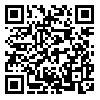Volume 17, Issue 2 (2015)
JAST 2015, 17(2): 287-298 |
Back to browse issues page
Download citation:
BibTeX | RIS | EndNote | Medlars | ProCite | Reference Manager | RefWorks
Send citation to:



BibTeX | RIS | EndNote | Medlars | ProCite | Reference Manager | RefWorks
Send citation to:
Golpour I, Amiri Chayjan R, Amiri Parian J, Khazaei J. Prediction of Paddy Moisture Content during Thin Layer Drying Using Machine Vision and Artificial Neural Networks. JAST 2015; 17 (2) :287-298
URL: http://jast.modares.ac.ir/article-23-10165-en.html
URL: http://jast.modares.ac.ir/article-23-10165-en.html
1- Department of Biosystems Engineering, Faculty of Agriculture, Bu-Ali Sina University, Hamedan, Islamic Republic of Iran.
2- Department of Agricultural Technical Engineering, College of Abouraihan, University of Tehran, Islamic Republic of Iran.
2- Department of Agricultural Technical Engineering, College of Abouraihan, University of Tehran, Islamic Republic of Iran.
Abstract: (7840 Views)
The goal of this study was to predict the moisture content of paddy using machine vision and artificial neural networks (ANNs). The grains were dried as thin layer with air temperatures of 30, 40, 50, 60, 70, and 80°C and air velocities of 0.54, 1.18, 1.56, 2.48 and 3.27 ms-1. Kinetics of L*a*b* were measured. The air temperature, air velocity, and L*a*b* values were used as ANN inputs. The results showed that with increase in drying time, L* decreased, but a* and b* increased. The effect of air temperature and air velocity on the L*a*b* values were significant (P< 0.01) and not significant (P> 0.05), respectively. Changing of color values at 80°C was more than other temperatures. The optimized ANN topology was found as 5-7-1 with Logsig transfer function in hidden layer and Tansig in output layer. Mean square error, coefficient of determination, and mean absolute error of the optimized ANN were 0.001, 0.9630, and 0.031, respectively.
Article Type: Research Paper |
Subject:
Agricultural Machinery|Food Science and Technology
Received: 2013/12/30 | Accepted: 2014/06/14 | Published: 2015/03/1
Received: 2013/12/30 | Accepted: 2014/06/14 | Published: 2015/03/1
| Rights and permissions | |
 |
This work is licensed under a Creative Commons Attribution-NonCommercial 4.0 International License. |







